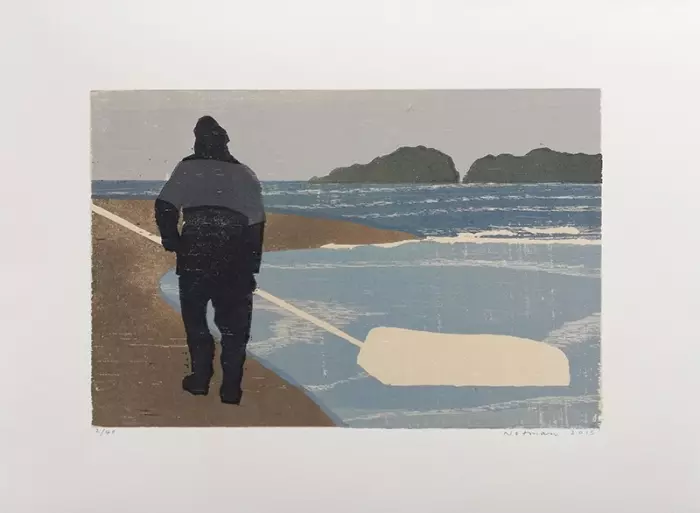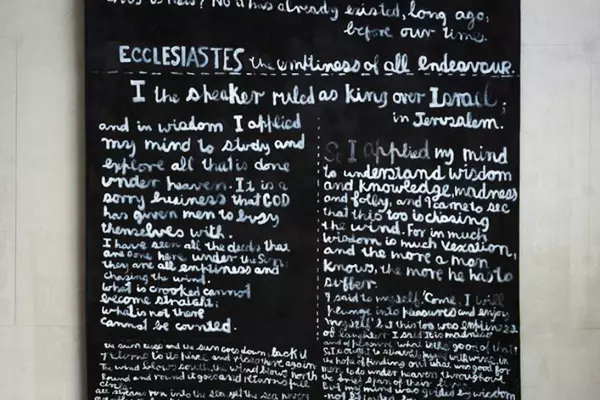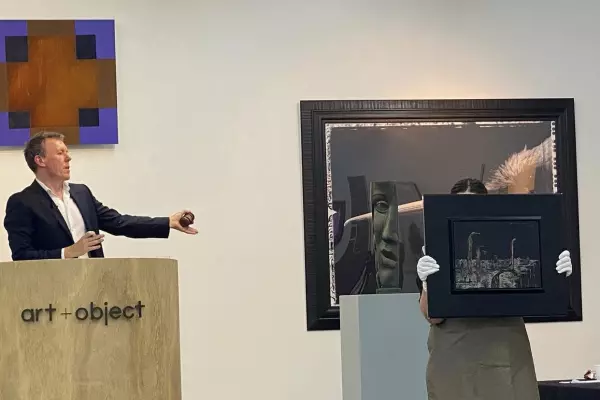Collecting limited-edition prints can be an excellent way to start a collection or acquire works by more important artists that may otherwise be out of your reach.
A fine art print is an image designed by an artist and hand-printed by a master printmaker in conjunction with the artist in a limited run. This form of printmaking is extremely specialised and the term “fine art print” covers a variety of media, such as a woodcut or linocut, etching or engraving, lithograph or screen-print.
In the processes that use a wood or metal plate such as an etching or woodcut, an image is incised into the base material using a sharp object, covered with ink or paint and then compressed onto paper under a printing press to transfer the image to the page.
In lithography, the image is drawn onto a special lithographic stone or metal plate which absorbs the oily crayon, then damped with water and printed with ink. The water repels certain areas to create the image.
Screen-printing works in a similar way to lithography, where the ink or paint is forced through a prepared screen onto paper except in the areas made permeable with a blocking stencil.
All these processes need to done in printmaking studios using specialised equipment, and combine multiple steps that are highly technical. These types of prints should not be confused with mass-produced poster prints, which are made in a highly mechanised way and the artist does not have any involvement in the actual process once they have designed the image.
Many artists produce prints as part of their oeuvre, and internationally, some of the 20th century’s most famous, such as Pablo Picasso, Marc Chagall, Andy Warhol and Salvador Dali, and, more recently, British street artist Banksy, have considered printmaking an integral part of their practice. Certain prints by these artists have fetched millions of dollars, and in Auckland, a run of Banksy screen-prints auctioned in 2020/2021 by the International Art Centre hit world-record prices, selling in the hundreds of thousands of dollars.
Closer to home, some of our best-known and important artists also made prints that strongly referenced their paintings. Gordon Walters produced 13 screen-prints in the 1970s and 1980s, most of which feature his highly recognisable koru design, and as his original paintings of the same subject have greatly increased in price in the past few years, so, too, have the prints. Currently, a black-and-white koru painting would sell for more than $500,000 at auction; by comparison, a print of the same subject would fetch between $15,000 and $25,000, depending on the image and condition.
Don Binney prints have also seen a substantial uptick in valuations on the back of the dramatic rise in the prices of his bird paintings. Binney’s most desirable screen-prints produced in the 1980s feature an oversize bird flying above a New Zealand landscape, just as his most popular paintings do. While these paintings may make between $400,000 and $500,000 at auction, the screen-prints realise between $12,000 and $20,000.
When you collect prints, there are a few key aspects to consider, and one of the most important is the edition number. This indicates the total number of prints in the edition and can be found either on the front or back of the work, handwritten by the artist; it looks like a fraction, eg 1/10 or 10/50. The top number denotes where the particular print falls in the edition and the bottom number is the total printed overall. Prints will have a higher value the lower the overall edition number is. A total number under 50 is preferable, although good prints have been produced in editions of 100 or 150. Generally, when the overall number printed is higher than 200, it suggests a more mechanical process and the artist may have had very little involvement with the production.
Other edition details seen on prints can be A/P and P/P, which stand for “artist’s proof” or “printer’s proof”. As the names suggest, they are the test run for the artist and printer to check the colour and calibration of the image on the page, and are often sold as part of the edition. It is a common misconception that a print holding number one in the edition will be more valuable than others, but in New Zealand, this is not the case.
It also pays to closely check the colour and condition of the prints you intend to purchase. Many produced in the mid-20th century were inexpensive in their day and may not have been printed using the best-quality materials and paper, or kept in optimal conditions. They are therefore highly susceptible to fading and other issues that affect works on paper, such as foxing (brown spots on the surface) and brown surface staining. While foxing and staining can often be treated successfully by a professional conservator, lost colour cannot be returned to a work and the value is greatly diminished.
If you are interested in collecting fine art prints, the best places to look are the dealer galleries who represent the artists – they will usually hold a stock of prints that can be purchased framed or unframed – or at auctions, for those artists who may have died and do not have gallery representation.
Briar Williams is a specialist fine art valuer at artvaluationsnz.com










